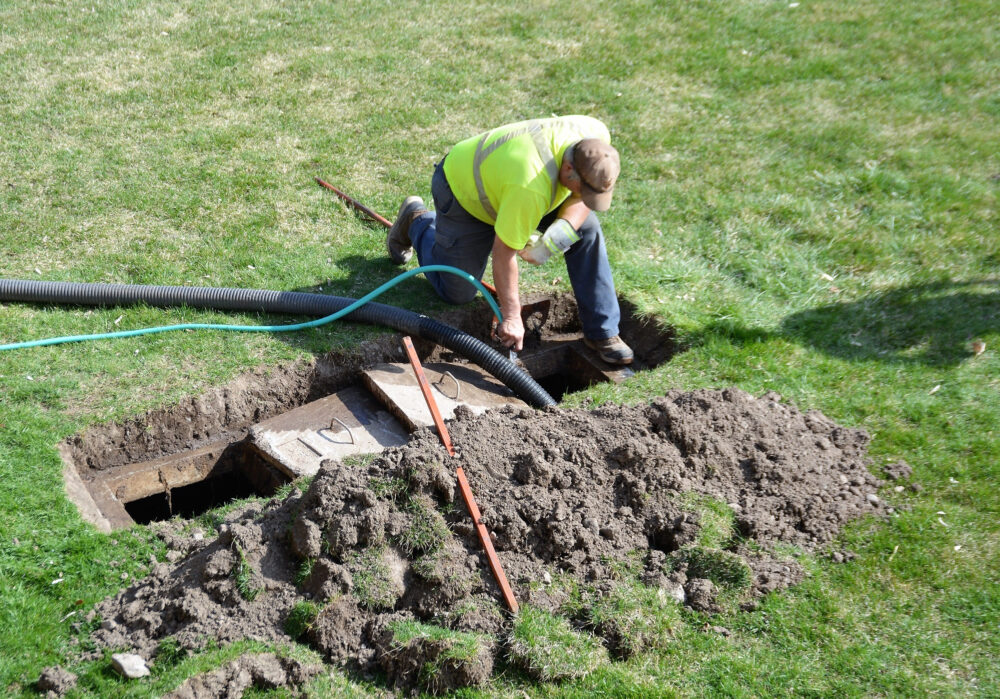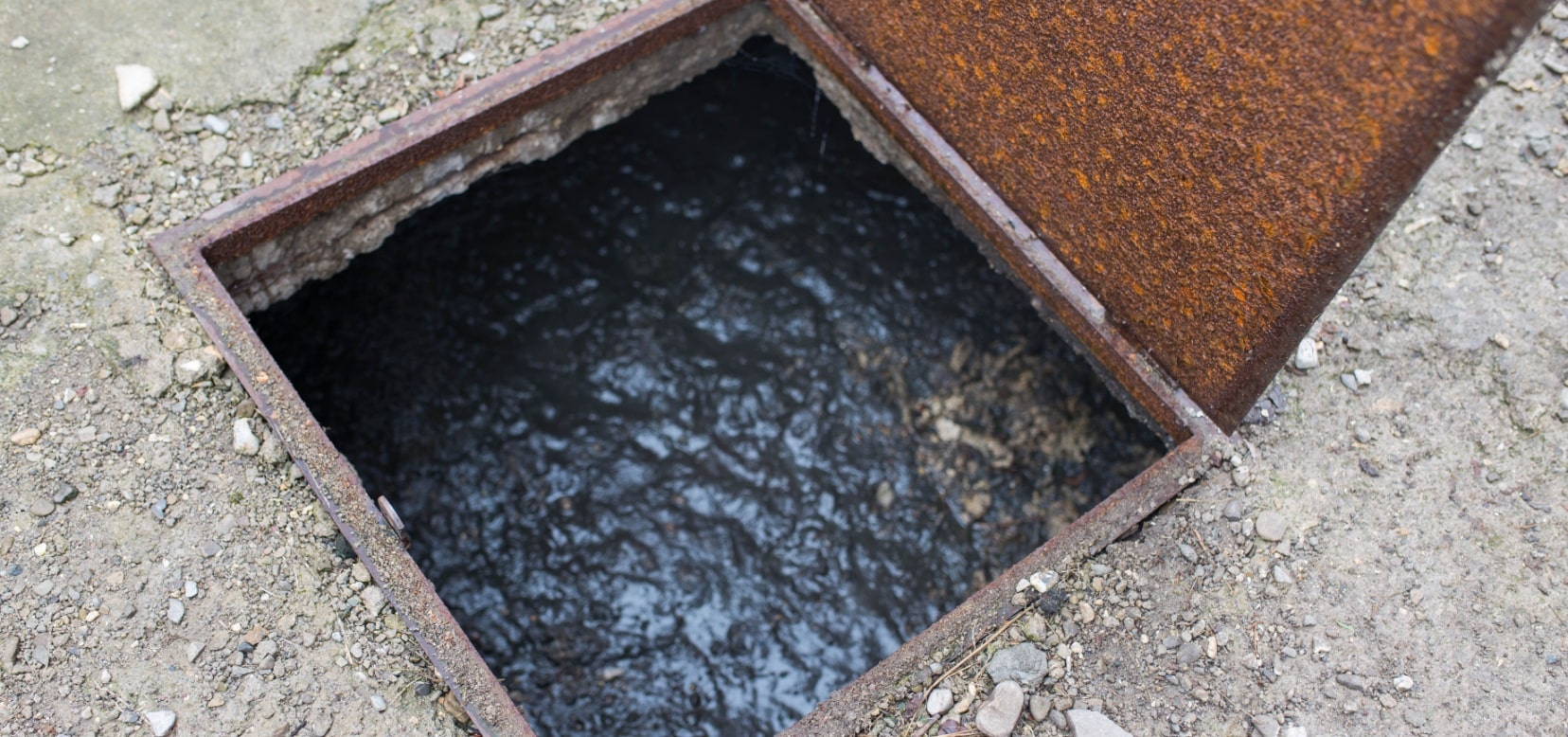A septic system is one of those parts of your home that you rarely think about—until there’s a problem. And when that problem hits, it can get messy fast. The key to avoiding expensive repairs or a complete system failure is knowing when your system is telling you something’s wrong.
In this blog, we’re going to walk through the most common signs your septic system needs inspection, why these warning signs matter, and how a timely septic tank inspection can save you thousands in repair costs.
We’ll also look at the common causes of septic system failure so you know exactly what to watch out for.
Most septic issues don’t start as emergencies. In fact, the most common cause of septic system failure is neglect, specifically, skipping routine inspections and maintenance. Small warning signs go unnoticed, damage builds up, and before you know it, you’re dealing with sewage backups, contaminated soil, or a completely unusable system.
Here are some other leading causes:
Overloading the system with excessive water use
Flushing non-biodegradable items
Tree roots damaging underground pipes
Lack of tank pumping and cleaning
Damage or wear to the drain field
Fortunately, most of these problems can be prevented—or at least caught early—with regular septic tank inspections.
Your septic system doesn’t have a check engine light, but it does send up red flags when something’s off. The key is knowing what those signs look like.
One of the first signs of a septic issue is sluggish drainage. If your sinks, showers, or bathtubs are taking longer to drain than usual, or you hear bubbling or gurgling sounds coming from the pipes after use, it could indicate a developing blockage or a full septic tank.
These symptoms happen when the wastewater can’t flow freely through the plumbing system. As the tank fills up with solid waste and sludge, it restricts the flow of water, creating pressure and air pockets that result in those bubbling sounds.

Puddles or consistently damp patches in your yard are often signs of a failing septic system. The drain field is designed to filter and disperse treated wastewater into the surrounding soil. If the system becomes overwhelmed, either due to a full tank, clogs, or drain field failure, that water has nowhere to go and begins to collect on the surface.
This standing water may look harmless, but it often contains bacteria and waste contaminants that can be hazardous to health, especially for children or pets playing outside.
If you’re noticing a strong sewage smell near your indoor drains, around the tank area, or in the yard, it’s time to pay attention. These odours are usually caused by untreated wastewater escaping the tank or drain field. The smell is not only unpleasant but also potentially dangerous, as it can indicate raw sewage exposure.
Odours often result from a tank that’s full, a leak in the system, or a compromised drain field. Hydrogen sulfide gas (which smells like rotten eggs) is a common byproduct of untreated waste and is a good indicator that something in the system isn’t working as it should.
These smells are not a normal part of septic system operation and should not be dismissed.
One of the most severe signs of septic system failure is wastewater backing up into your home through toilets, sinks, or floor drains. This usually indicates that the tank is completely full or that there’s a blockage preventing waste from leaving your home and entering the septic tank.
This kind of backup is a health hazard, exposing you to harmful pathogens, bacteria, and viruses found in sewage. It also often results in costly clean-up, property damage, and even structural damage to flooring or drywall if the issue isn’t resolved quickly.
Even if your septic system appears to be working fine, going too long without a professional inspection increases your risk of unexpected and expensive issues. Septic systems should be inspected at least once every three years, according to most experts, and more frequently for larger households or systems with higher usage.
Inspections check for issues that aren’t visible from above the ground or inside the house, such as:
Accumulation of solid waste
Cracks in the tank
Failing baffles or filters
Drain field saturation
Tree root intrusion
Routine inspections also help you maintain an optimal pumping schedule, which prevents tank overflows and keeps your entire system working efficiently.
While a vibrant, green lawn is usually a good thing, it can be a red flag when the grass above your septic drain field is noticeably lusher or grows faster than the rest of your yard. This could indicate that excess wastewater, or even raw sewage is leaking into the soil and acting as a fertilizer.
In a properly functioning system, the drain field should only receive treated wastewater. If the system is failing, solids or untreated liquids can seep into the field, overloading it and promoting unusually healthy plant growth. Over time, this can saturate the soil, leading to standing water, odours, and the inability of the field to handle new wastewater.

A septic tank inspection is more than just a quick glance at the tank level. A thorough inspection checks the entire system, including:
Tank levels: Measuring sludge and scum layers to determine if pumping is needed.
Flow test: Checking how wastewater moves through your system.
Tank integrity: Looking for cracks, leaks, or damage inside the tank.
Inlet and outlet baffles: Making sure waste is flowing in and out correctly.
Drain field health: Inspecting for signs of flooding or system overload.
Inspections are fast, affordable, and often uncover issues before they turn into costly repairs. If you’ve experienced any of the symptoms mentioned above, now’s the time to schedule one.
Too many homeowners wait until there’s visible damage or even a full system failure before calling in help. But by then, you’re likely facing:
Thousands in repair or replacement costs
Property damage
Soil contamination
Health risks from raw sewage exposure
Regular septic tank inspections allow you to catch problems early, extend the life of your system, and protect your home’s value. It’s preventative maintenance that really pays off.
Many septic problems can be traced back to avoidable mistakes. Here are some of the biggest culprits:
Using too much water: Large volumes of water at once (like multiple laundry loads in one day) can overload your system.
Flushing the wrong items: Non-biodegradable products like wipes, feminine hygiene products, and paper towels can clog your system quickly.
Skipping pump-outs: Your tank should be pumped every 3–5 years, depending on size and household usage.
Using chemical drain cleaners: These can kill the beneficial bacteria your system needs to break down waste.
Ignoring early signs: Most of the time, your system will show you something’s wrong—you just need to know how to read the signs.
Septic problems don’t fix themselves—and the longer you wait, the worse (and more expensive) they get. Whether you’re noticing slow drains, strange smells, standing water, or it’s simply been a few years since your last check-up, taking action now can save you from serious headaches down the line.
A professional septic tank inspection from Brock Excavation is the simplest way to catch small issues before they turn into major repairs. Our experienced team will assess your system, provide clear and honest recommendations, and help extend the life of your septic setup—without the guesswork.
Don’t wait for a backup to tell you something’s wrong. Schedule your septic maintenance or inspection today and protect your home from costly damage tomorrow.
Get in Touch!
Do you have an excavation, septic, or landscaping project in mind?
Request a quote!

A professional, experienced team serving York and Durham Regions, Kawartha Lakes, and Simcoe County with excavation, demolition, septic services & more.
© 2025, Brock Excavation & Septics. All Rights Reserved.
Web Design By WebMarketers